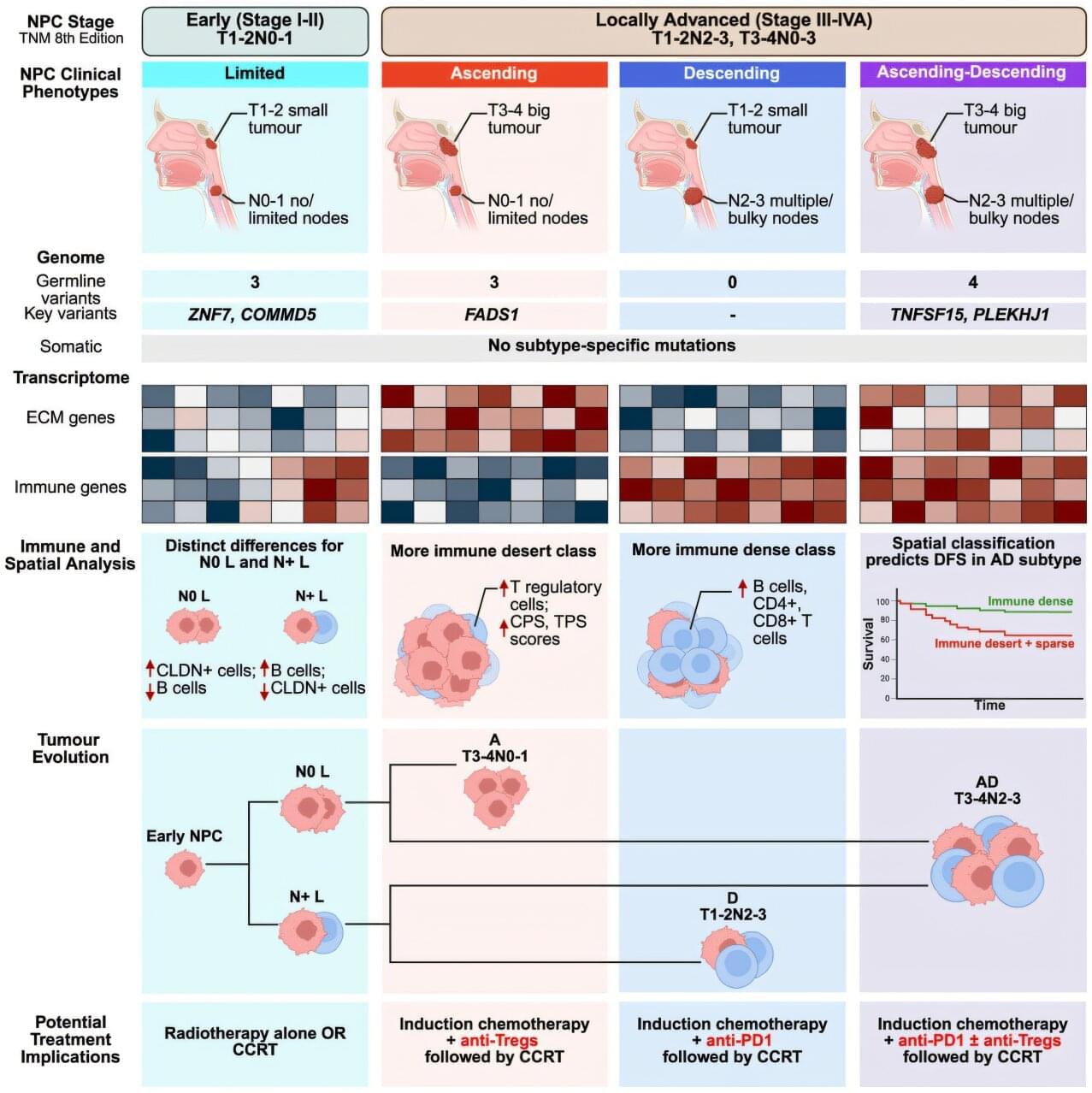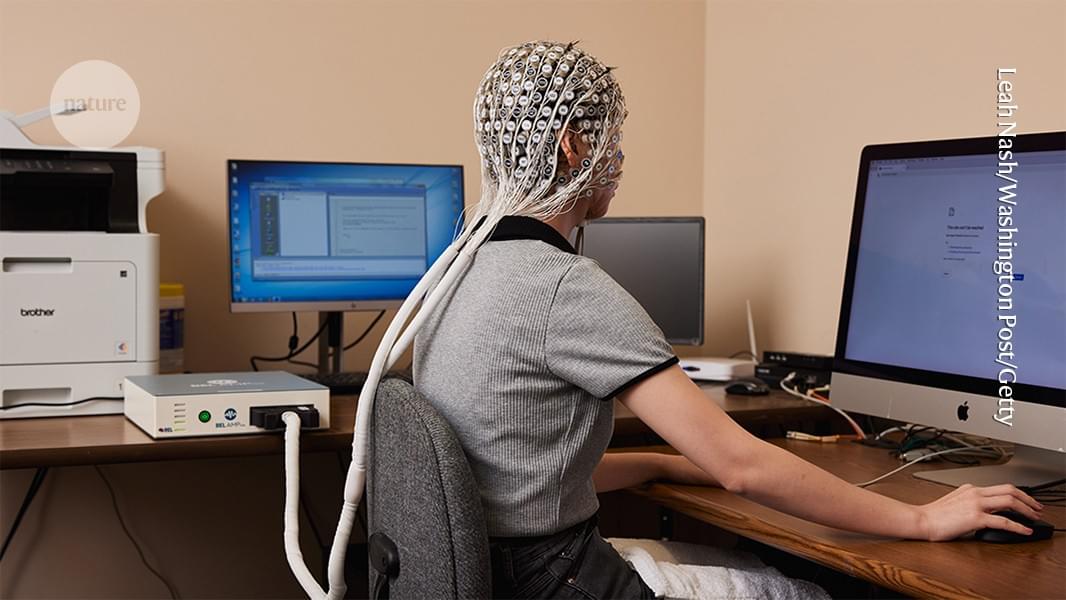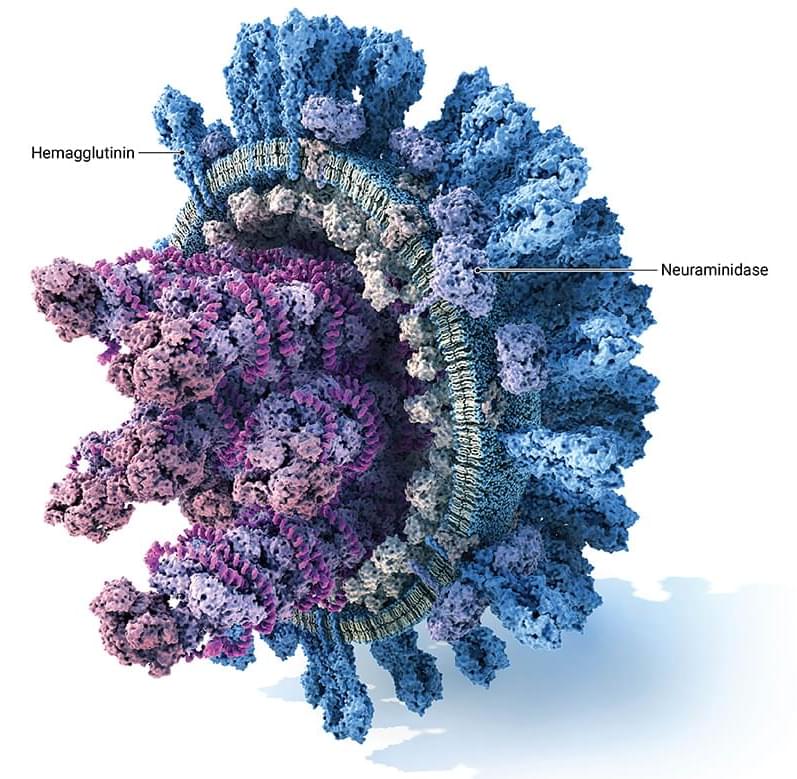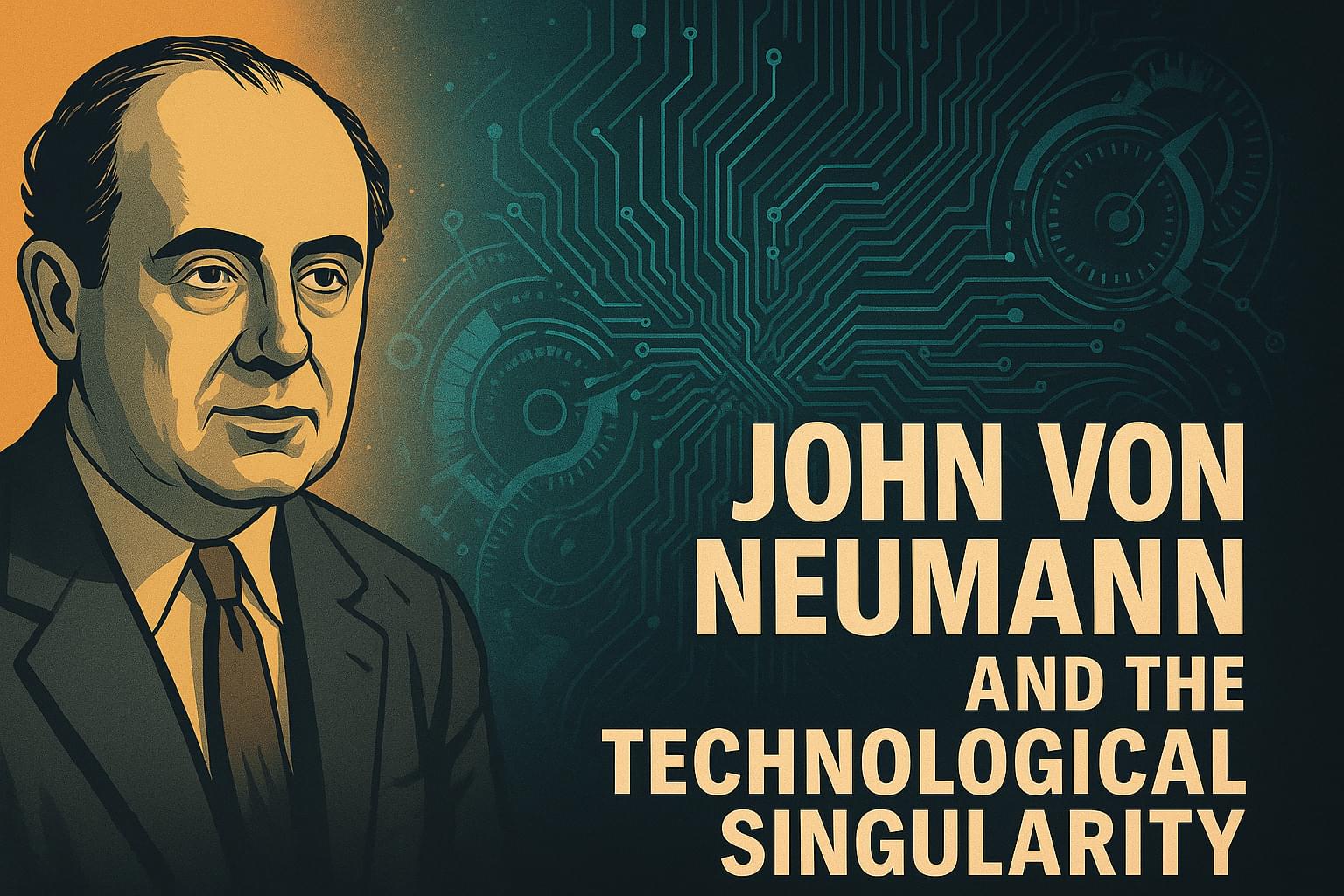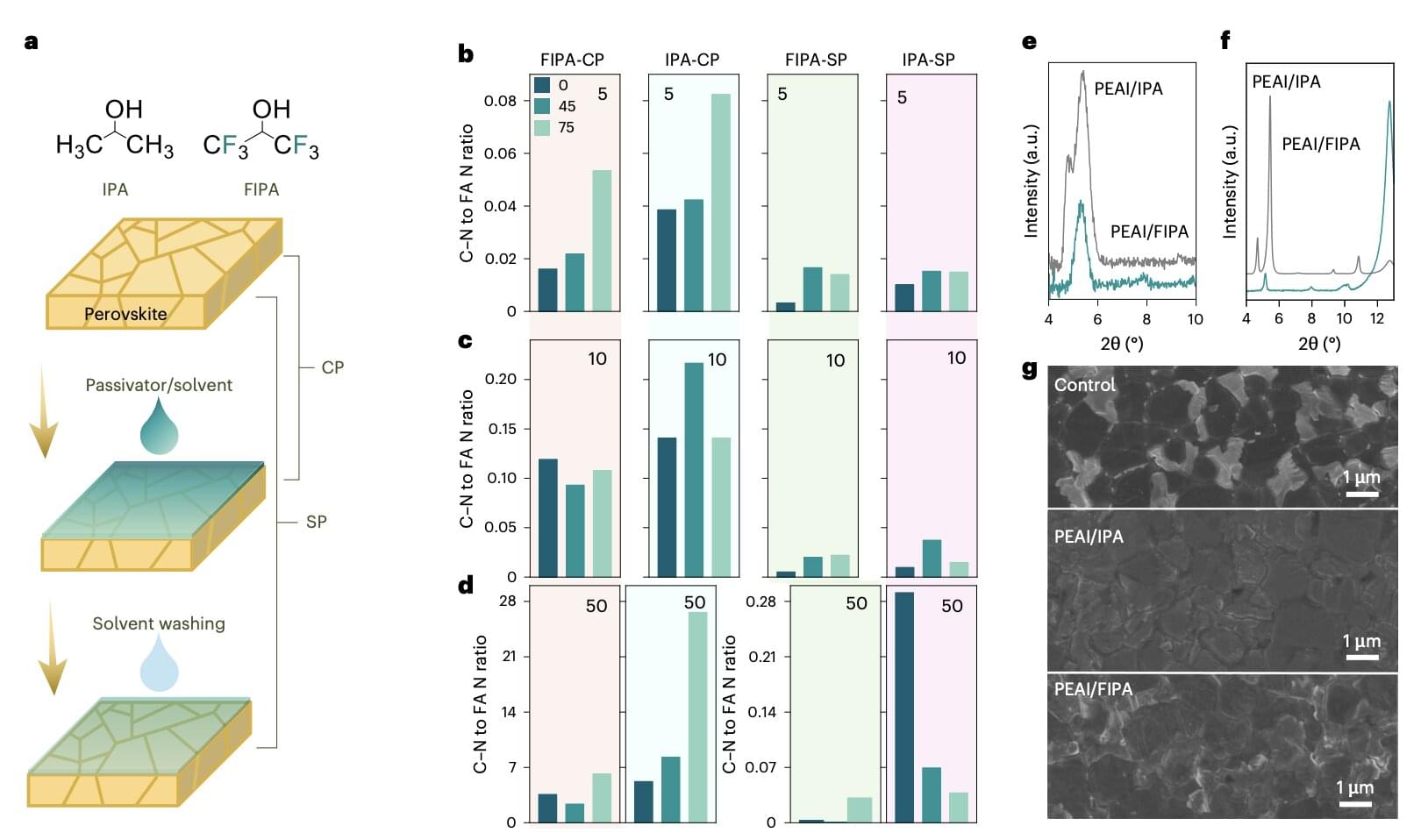A study led by clinician-scientists and researchers at the National Cancer Centre Singapore (NCCS) has found that the tumor immune microenvironment (TIME) plays a critical role in the progression of nasopharyngeal carcinoma (NPC) commonly known as nose cancer. These insights are paving the way for precision oncology approaches, some of which are currently used in clinical trials at NCCS. The findings are published in Cell Reports Medicine.
NPC is a type of head and neck cancer that originates in the nasopharynx—the passageway behind the nose. It is prevalent in Southeast Asia, Southern China and North Africa and occurs more frequently in men. In Singapore, NPC is the 10th leading cause of cancer death in men and is the third most common cancer in men aged 30 to 49.
Due to the anatomy of the nasopharynx, NPC often spreads insidiously and is typically diagnosed at a locoregionally advanced stage, where cancer has spread within the head but not to distant parts of the body.
